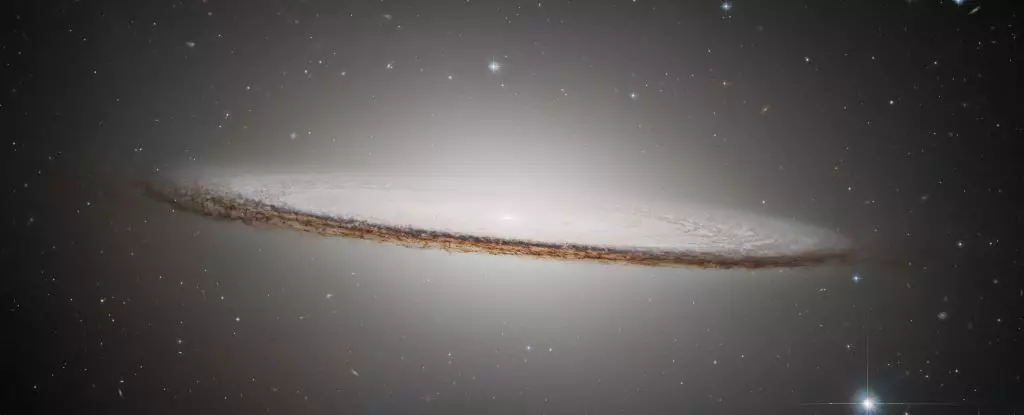The sky is an expansive canvas where cosmic wonders paint their awe-inspiring stories. Among these celestial masterpieces, the Sombrero Galaxy (Messier 104) shines brilliantly, captivating the eye and the imagination. This remarkable galaxy, situated about 31 million light-years away in the constellation Virgo, stands out as a fusion of distinct galactic characteristics. The odd orientation makes it resemble a large disk crowned with a luminous center, enhancing its allure. The blend of features manifests into what scientists dub a peculiar galaxy, defying conventional classifications and compelling observers to ponder its enigmatic nature.
Dust Lanes and Distinction
What truly sets the Sombrero Galaxy apart from the myriad of galaxies dotting the night sky is its breathtaking array of thick dust lanes. These striking structures streak across the galactic plane and encircle the galaxy’s edges, giving it a distinguished outline that resembles the brim of an elegantly adorned hat. This captivating aesthetic is not merely for show; these dust lanes are pivotal in defining the galaxy’s spiraling structure. They highlight an intricate dance of cosmic materials, which, while visually stunning, also play a significant role in galactic evolution.
The Hubble Legacy
The Hubble Space Telescope first caught a glimpse of the Sombrero in 2003, capturing an image that quickly cemented itself into the hearts of both astronomers and the general public. Now, 35 years after Hubble’s launch, this iconic image has been reprocessed using advanced techniques, revealing new layers of detail that were once hidden from view. The reimagined imagery showcases not just the elegant structure but also the faint twinkle of distant stars in the background, enriching our understanding of this stellar giant. Innovations in imaging remind us that our exploration of the cosmos is far from complete; the longer we gaze, the more we uncover.
The Quiet Yet Complex Life of Sombrero
While the Sombrero Galaxy dazzles with its beauty and size—slightly surpassing our Milky Way—it tells a quieter story with regard to star formation. The galaxy produces, on average, just about one solar mass of new stars each year. This slow pace is unexpected given its brightness and the number of stars it hosts. The galaxy sits nearly edge-on to our line of sight, thus complicating our ability to study its underlying dynamics. Nonetheless, the secrets it holds captivate both professional astronomers and passionate stargazers, showcasing the multifaceted nature of galaxies in our universe.
The Supermassive Heart
Observations from the James Webb Space Telescope (JWST) have unveiled even more about the Sombrero Galaxy’s supermassive black hole, which contains a staggering mass equivalent to approximately 9 billion suns. This colossal entity lurks in the galaxy’s bright center, illustrating the dynamic and often violent processes that govern galactic centers. The juxtaposition of a brightly glowing nucleus against the dark, clumpy dust at the galaxy’s edge serves to emphasize the contrasts that define this alluring celestial formation.
The Sombrero Galaxy continues to be a source of wonder, captivating those who delve into its mysteries and inviting us to contemplate the grand tapestry of the universe. As we continue to refine our observational techniques and deepen our understanding of galaxies like the Sombrero, it is undeniable that the cosmos holds countless surprises waiting to be uncovered.


Leave a Reply